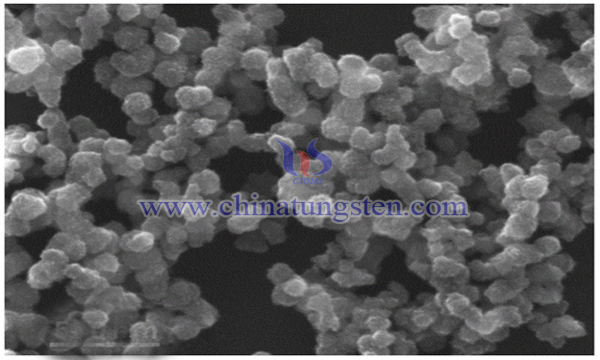Tungsten Trioxide Micro-nano Flower Ball
- Details
- Category: Tungsten Information
- Published on Wednesday, 27 February 2019 21:17
At present, the assembly of one-dimensional or two-dimensional nanostructure units is becoming a new hotspot in the research of nanomaterials. Recently, some scholars have published a hydrothermal method to prepare micro-nano spherical tungsten oxide nanosheets.

Using tungsten source, alcohol solvent and surfactant as raw materials, two-dimensional tungsten oxide nanosheets with different sizes and thicknesses were prepared by changing reaction time, reaction temperature and concentration of reactants. The nanosheets were further self-assembled to form nano-three-dimensional tungsten oxide microspheres with controllable size and uniform morphology, including the following steps:
Step 1. Add 15g ethanol and 0.1g to the container, mix and stir the surfactant Pranic F127 until Pranic F127 dissolves completely. The solution is colorless and transparent.
Step 2. Mix 0.2g WCl6 and 0.6g deionized water into the container and stir until the solution turns yellow to form homogeneous and stable tungsten trioxide colloid.
Step 3. Transfer the precursor solution in the reaction vessel to the reactor to raise the temperature to 110 ℃ and hold for 120 minutes.
Step 4. Cool down to room temperature after reaction.
Step 5. Remove the supernatant, wash the bottom part of the reactor with ethanol for six times, centrifuge at 7000r/min, and centrifuge for 2 minutes to obtain precipitation. The precipitation is self-assembled nanospheres of tungsten trioxide nanosheets.
The characterization and analysis of the prepared tungsten trioxide microspheres show that the cubic WO3 nanospheres with uniform morphology and diameter of about 200-250 nm can be obtained according to the technological parameters. It can be seen from TEM that the microspheres are self-assembled from ultra-thin tungsten oxide nanosheets, and the XRD results show that the diffraction peaks of the microspheres coincide with those of cubic WO3. It has high purity and crystallinity. It can be applied to the development of photocatalysts, gas sensors, electrochromic devices and photochromic devices.
- Tungsten Oxide Manufacturer & Supplier, Chinatungsten Online: www.tungsten-oxide.com
- Tungsten News & Prices of China Tungsten Industry Association: www.ctia.com.cn
- Molybdenum News & Price: news.molybdenum.com.cn
- Tel.: 86 592 5129696; Fax: 86 592 5129797; Email: sales@chinatungsten.com



 sales@chinatungsten.com
sales@chinatungsten.com